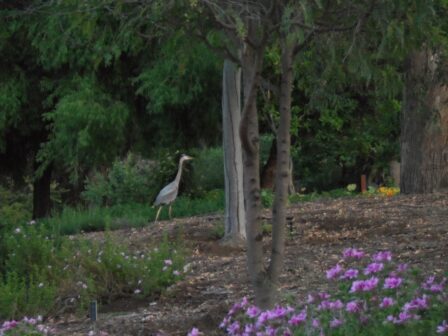Courting the Trees
By Charlotte Tenney, MA Integrative Health
Selecting new trees for the Trees for Health Garden in Balboa Park is somewhat like dating. Friends make introductions in hopes of a good match; some are encountered by accident in the course of daily life; and then, (being a modern woman) there is a lot of online searching. My latest love interest for the arboretum is tall, dark, foreign and mysterious with an intriguing name: upas. It was the name that got me.
There I was, driving down Sixth Avenue, counting the streets in alphabetical order … Ash, Beech, Cedar, Date and so on. I reached Redwood, Spruce, and Thorn. Suddenly, there was Upas Street, right exactly where I make my turn into the park to arrive at the Trees for Health. Obviously, due to its inclusion in the series, it was a tree.
It turns out that upas (Anticaris toxicaria) was well known a century or ago, when San Diego was growing fast and needed new street names near downtown. It was so well known that Susan B. Anthony used it as a metaphor in a speech about women’s rights. It was well-enough renowned that the Russian poet, Puskin, wrote a poem about it and it was used as the name of a children’s Christmas book .
The Victorian era found this tree fashionable due to the commercial exploration and exploitation of tropical areas of Africa, Java, India and parts of Australia, where this tree flourishes. Its latex-like sap was used by natives for poison-tipped arrows for hunting, its bark for making fabric for clothing and tapestries and its edible fruit prized for refreshment. Its toxic sap yielded a cardio-tonic medicine that could be used much like digitalis.
Well, you can see why I was attracted. When I did the background check on line, this upas had a lot to offer. The only draw-back has proven to be that upas is hard to locate. Being elusive only makes it more attractive. So far, I haven’t been able to find any place that has this tree in cultivation for sale … not even seeds. It doesn’t have a Facebook page either.
Previously I have been seduced by such colorful characters as banaba, Ylang ylang, African sausage and soap bark. Each one of these had its own fascinating story fraught with family history, industrial successes, sense of humor and a healing touch. Who would not be charmed, smitten and motivated to get better acquainted?
Banaba is a member of the crepe myrtle family and its leaves have been used for controlling blood sugar in diabetes and used to assist in weight loss programs. It is now available in capsule form on the supplements shelf. Ylang ylang’s flowers are distilled into a fragrant essence that was mixed with coconut oil to create “oli of Macassar” a popular hair tonic of Victorian times. Its use was so prevalent that it forced the invention of a household item called “antimacassar,” a crocheted cover intended to absorb excess hair oils of trendy men and protect the upholstery from stains. African sausage fruit has traditionally been used for all skin ailments by native peoples and has recently been developed into an effective treatment for skin cancer. Soap bark, going by the botanical name of Quillaja, can be found as a sudsing agent in shampoo, root beer and fire extinguishers.
Yep. I am a sucker for a good story. If you’d like to hear some more of the tales told by the tall trees, join me at the County Fair in Del Mar. I will be there at 1 p.m., Sunday, June 16at the stage south of the horticulture building. I will gossip with great abandon about the trees that captured my heart and won my (gardening) hand. Feel free to share with me some of your own amorous adventures with arboreal specimens.
Category: Health & Fitness, Local News








